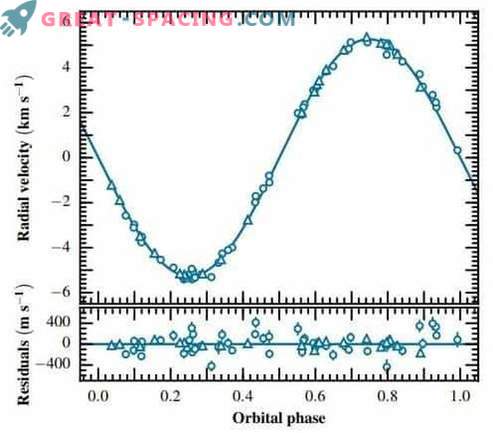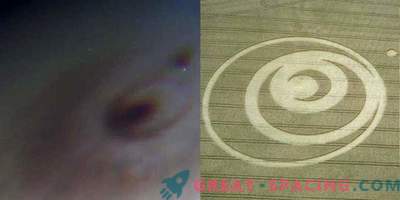
European astronomers have found a new brown transit dwarf in dynamic tide mode as part of the WASP survey. The found object was designated WASP-128. It revolves around the host in close orbit. The measured rotational speed of the star point sends it to the mode where dynamic tides dominate at the contacts.
Brown dwarfs are intermediate objects between planets and stars. Astronomers believe that these are substellar objects, covering a mass range from 13 to 80 Jupiter. Most of the brown dwarfs found were single. But some have orbital solar stars.

Radial motion speed WASP-128. The blue dots correspond to RV measurements made with CORALIE (circles) and HARPS (triangles). The solid line is the best model. Remains of the fit are displayed on the bottom of the
Also found that only a few brown dwarfs rotate around G-dwarfs. It is believed that such objects in G-dwarf systems undergo rapid orbital decay due to elusive tidal dissipation. The discovery of new objects of this kind would help in the study of various models of stellar evolution. Recently, using the WASP program, we managed to find a new brown dwarf around the G-dwarf. The find was called WASP-128, and the transit signal was identified using the 0.6-meter TRAPPIST robotic telescope and the 1.2-meter Euler telescope (Chile). Subsequent spectroscopic surveys confirmed that the signal was caused by a massive circumstellar satellite.
WASP-128 in size reaches 0.94 radius of Jupiter, but 37.5 times more massive. Revolves around a host star at a distance of 0.036 a. e. every two days. It also revealed that the dwarf swells slightly, and its remaining lifespan will take 267 million years. This figure was derived due to the dynamically stable time of magnetic braking by a neighbor.
The host star is 1375 light-years away. It is 16% more massive than the Sun, its age is 2.3 billion years, the effective temperature is 5950 K, and the rotation period is 2.93 days.











































